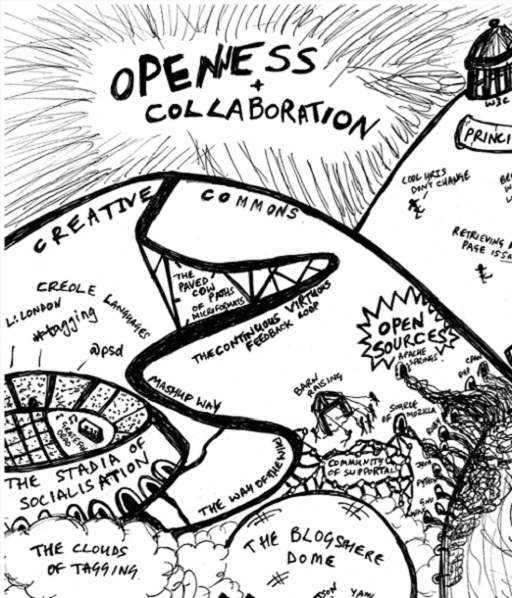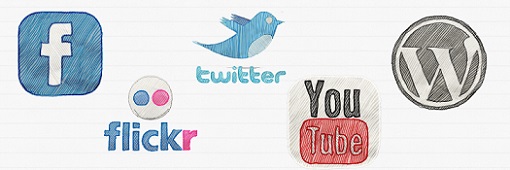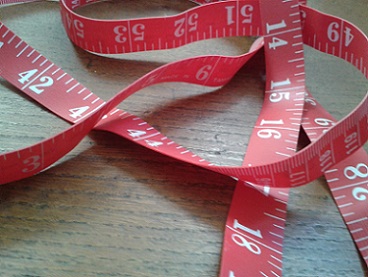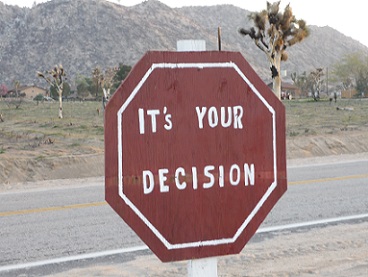Use 'Print preview' to check the number of pages and printer settings.
Print functionality varies between browsers.
Printable page generated Saturday, 20 April 2024, 5:48 AM
5 Putting ‘open’ into practice
5.1 Introduction
This section of the course takes a closer look at a range of open practices, why and how you might want to consider measuring the impact of the resources you create or use, and suggests some ideas for next steps in developing your own practice.
Learning outcomes
By the end of this section of the course you should:
- have explored a range of other open practices
- have a better understanding of the challenges and benefits of measuring the impact of a resource you create or use
- considered a range of possible next steps and planned your own ‘open’ journey for the next few months.
5.2 Sharing processes and outcomes
Earlier in this course you looked at different interpretations, or characteristics, of ‘openness.’ Openness can refer to how one does something (in other words the processes or tools that are used) and the outputs produced, but it always takes place within a specific context.
Sharing methodologies, data, practices, ideas and processes
Creating OER involves sharing resources you have created, but what about sharing the progress of a project, idea, research or sharing data?
For example, you may work on a project. How do you let others know about the project’s progress and share outputs? Often these are shared only with selected audiences. Unless there is reason for not sharing the project’s progress and documentation beyond identified stakeholders (e.g. for confidentiality reasons, see Section 4.3), would being more transparent help the project to develop, engage new audiences and/or receive feedback?

Making blogging or tweeting part of your everyday practice might involve an initial change in how you work to ensure that you make time for this type of activity. You can read more about open dissemination in the ‘Open dissemination’ and ‘Reflecting in the open’ sections of the OER Hub course Open Research.
Open research and open access
Maybe your role has a research component or you have an interest in research? You might be familiar with the terms open access and open research. The former aims to make data and research outputs such as peer-reviewed research papers available openly so that everyone, regardless of whether they are based at an educational institution or have a subscription, can access them. You can browse a Directory of Open Access journals (DOAJ) to find out what journals exist in your subject areas. It is also worth remembering that you can often upload a pre-proof version of journal articles to sites where you can showcase your research, such as ResearchGate and Academia.edu. Open peer review of journal submissions rather than anonymous closed review is also gaining traction, with an October 2015 study revealing that reviewers were ‘more constructive’ and offered ‘slightly higher quality’ appraisals of work when the review process was public.
Open research is about making public not just the end results of research but the process, methods, instruments and tools that are developed as part of the research process. Social media and blogging is often key to this process (find out more about digital scholarship). You might already use social media such as Twitter or have a blog, but these can be utilised in ways to share and develop ideas before they are published formally. Where appropriate, anonymised datasets are also shared as part of the open research process. You have an ethical obligation to ensure that data is anonymised appropriately, and you will need to ensure that you have done this before uploading a dataset (perhaps to a repository such as Figshare).
5.3 Using social media in your context and open tools
Section 2.5 highlighted the importance of digital literacy. This section explores the role of social media and open tools in open practice and highlights good practice examples.
Blogging, Twitter, open badges and social media

Another example of ‘opening’ up processes is, where appropriate, the development of open online courses or incorporating social media or blogging into a course’s activities. Some universities host courses on Wordpress, for example. Katie Sykes at Thompson Rivers University developed Lawyering in the 21st Century on Wordpress so that students could develop ‘a roadmap for [their] legal career’ whilst participating in regular 'partner meetings' and collaborating on a range of projects. The University of Dundee’s Medical School has also utilised Wordpress, whilst the University of Mary Washington has developed A Domain of One's Own, enabling students and teachers alike to host courses and blogs. To help support teachers in the effective use of Wordpress, educators at the University of British Columbia have developed an open course on open pedagogy: Teaching with Wordpress.
You could use Twitter or other social media (e.g. Pinterest) as a resource, as suggested by the University of Dundee's Natalie Lafferty:
Using Twitter for teaching
Effective use of social media in teaching is critical and Natalie spoke at length about how her own use of Twitter helped inform the way in which she encouraged students to engage with the platform:
And I think it’s partly because of how we, we think – oh! Let’s use Twitter in the classroom – without really thinking about how we use it as professionals. And as professionals we use it as a networking tool and that’s where my learning network is. I pose a question and I learn so much from people. And students have their Facebook groups but they don’t look more widely.
So it’s interesting when I’ve looked at Twitter more recently what I’ve tried to do is to say: Twitter is a place to filter and search for OER that’s validated by professionals.
And I did a teaching session recently with some medical students who are doing a BMsC in Teaching in Medicine and I said I want you to look up this hashtag #FOAMed and see what you see. And it was like ‘Gosh! I just didn’t realise there was this stuff on Twitter.’ And it opened their eyes to it because they’d been really put off as to how they’d used it previously in the curriculum. And they saw straight away that there was all this stuff that was really relevant and the fact that it was being shared by doctors and consultants and professors. And they realise that actually there is a sense of peer review and validation.
Because I think that’s always the issue people have around OER, is that well actually is it accurate? You know, all this kind of stuff. And I think certainly from the FOAMEd community what you do see there are people constantly giving feedback, people are improving and changing things. And things get updated much more readily than a textbook. And I think the challenge for me is how do we broaden what we’ve learnt in medicine across the institution ...
Other educators create videos as part of their course, or even use the videos to deliver lecture content with face-to-face time then dedicated to practical activity. Bernd Porr at the University of Glasgow has adopted a ‘flipped’ approach to his Digital Signal Processing (DSP) classes. Read Bernd’s story on the OEPS Hub, including tips for creating open access videos.
Whilst awarding a badge or statement of participation to learners for engaging with course materials and activities is not necessarily an open practice, if you are developing open material with an assessment element attached to it you might want to consider using open badges as a way of acknowledging your learners’ achievements. Borders College in Scotland is using open badges ‘… for best practice in Moodle use’ by educators and learners. You can read more about Borders College, and different badging platforms in JISC’s ‘So what are open badges?’ or review open badging platforms such as Mozilla Open Badges and Credly.
Perhaps, whilst developing your materials, you might want to get a range of perspectives on the course content and decide to solicit feedback through open peer review of your material (as in the case of this course) before you publish your finalised course. Or perhaps your students could use blogging or other social media for assignments? If you're not sure where to start, check out the short presentation ‘An introduction to Twitter for teachers’ before moving on to Section 5.6.
Use open tools
The Open Source Movement, which promotes collaborative development of openly available code, software and tools was mentioned briefly at the start of the course. You might look to explore, use and even develop this type of resource as part of your everyday practice. Using open source tools and software ensures that everyone has access to the software packages they need when accessing materials. For example, Moodle, the learning management system used by many universities, is open source. You can find a list of open tools in Section 5.6.
5.4 Measuring impact

Pinpointing the impact of a specific factor (e.g. whether or not your performance has been affected by recent training or if the introduction of a new scheme or resource is making a difference) when there are many variables involved, can be difficult. The difficulty of measuring the impact of OERs can be intensified further, as it can be challenging for creators to track what happens with their resources, how and where it they are reused and what kinds of changes are made to them as they develop. This is why it’s good practice, wherever possible, to share back how you have reused someone’s materials with the creator, for example by leaving a comment where you found the original resource and by writing a review of resources in OER repositories if such a facility exists. (You can rate and review resources on a number of platforms, for example OpenLearn Works or OpenStax CNX). Long-term evidence for the impact of using a resource or learner/student feedback could also be shared or reported on.
There are a number of circumstances where measuring impact is important. You might want to see if changing resources increases retention or test scores in your class. Or you might be training a group of colleagues and wonder whether people make any changes to their own practice as a result of their participation. Assessing what kind of impact any changes to practice might have is an important consideration, and can provide evidence for best practice whilst building up a body of evidence for the impact of a resource in a particular situation. Understanding impact is also important for reflecting on what one might do differently or improve on in the future. Impact data is particularly important in relation to OER as there is an emergent body of evidence and a constant need to explore the multifaceted impact that open material has on learners and teachers alike.
But whilst it’s obviously important to measure impact, it is not necessarily clear how one can do this effectively; the diffuse nature of OER means that tracking a resource’s use is tricky. Tools that can help you to do this include that is embedded in an OER and enables reuse to be tracked. Two such examples are Track OER and CaPReT at MIT. A feature has been developed for OpenLearn Works that alerts the creator of content when their OER is copied to a new course in OpenLearn Works. Some people look at metrics such as the number of downloads or page views. Others conduct surveys. If you have badged your resource or issued a statement of participation, you could use the number of badges or certificates you award as a measure of engagement. However, do these methods constitute measuring impact? What metrics are most effective for particular resources or practices? And what about other variables or factors that might be making a difference?
Further, there are types of impact on practice that are difficult to measure. The OER Research Hub looked at a range of impacts that OER might have on educator practice and found, for example, that ‘78% of community college respondents felt that using OER encouraged them to collaborate more with colleagues’.
Activity 5A
Reflect on the following questions:
- What metrics are, or could be, important for the resources you create or use?
- Would measuring impact change the way you design a resource?
- How might measuring impact change your practice?
Look back at the factors you considered important when creating your own OER. Has thinking about measuring impact changed the way you could approach OER creation? Write down any thoughts in your reflective log.
5.5 Over to you …
Throughout this course, you’ve explored many facets of open practice whilst also looking in more detail at the practicalities of open licensing within the context of OER. So what’s next? Here are some resources for activities you might want to try and some examples of sharing best practice to start you thinking about next steps you could take to make your own practice more open. Feel free to add your own examples and thoughts in the OEPS forum.
Get started ...
- Join a community! Ask questions and share ideas about open practice. Start by looking at the OEPS Hub.
- Look at and contribute to mapping OER practice or contribute to and explore OER impact evidence and policy.
- Can you incorporate OER into your own work? Could you make a resource using openly licensed material and share it with others?
- Commit to sharing a percentage of your own material in the open.
Try something different ...
- Share your own experiences by blogging. Read ‘Blogging as reflection’.
- DS106 (Digital Storytelling 106) has a Daily Create where people share their own makes/responses to a fun task that’s posted each day. See also the Daily Create as a P2PU Challenge.
- Create an open course using a platform such as OpenLearn Works or Peer 2 Peer University’s Course in a Box (P2PU).
Remember if you make something, to share or publicise it so that others can use it too.
Spread the word ...
- Discuss OER with colleagues or get together to explore the potential of OER at your institution or organisation.
- Work with colleagues or students to repurpose or create materials. Good examples of different types of practice can be found via Siyavula and BCcampus (see Section 4.5) and Byron High’s creation of their Statistics Course and the University of Dundee’s Medical School.
- As well as talking with colleagues about using OER, you can also talk with students or clients about the types of resources you are using. What makes them different from resources you previously used, why are you using them and what impact (if any) does it have on your students? For more ideas, check out P2PU’s course Teach Someone Something with Open Content.
Activity 5B
Throughout the course you’ve reflected on different types of ‘open’ practice and considered different ways openness might impact on everyday practices. Review your reflective journal and consider the following questions:
- In what ways could you incorporate OER and/or more open practices into your own context?
- What could you do in the next 24 hours? The next week? The next month?
- What kind of impact might these changes have?
- Have you got any suggestions or ideas for ‘going open’ that are not included above? Share your ideas on the OEPS Hub Forum and let others know how you get on with planning your own ‘open journey’.
Write down your responses and ideas in your reflective log. Is there a colleague or friend with whom you can share your ambitions or ideas?
Now try the end-of-course quiz to consolidate your knowledge and understanding from this section. Completing the quizzes is part of gaining the statement of participation and/or the digital badge, as explained in the Course and badge information. Help make the course better by telling us what you think.
5.6 If you want to know more ...
Each If you want to know more … section of the course thematically presents additional material and resources on the topics for that section of the course.
Understanding open practices and open educational resources
To develop your understanding of OER and OEP further, you could:
- Delve deeper into the concept of ‘openness’ and where ‘open’ changes your approach to different (e.g. open access, open data or open research) Peer 2 Peer University (P2PU) offer a great range of courses developed and run by the community on different topics such as copyright and open licensing.
- Work through the Creating open educational resources course on OpenLearn.
- Take a look at Edutopia’s ‘Open educational resources (OER): resource roundup’, which gives an overview of how and where to look for different types of OER, or open material for particular occasions or themes (e.g. national holidays).
Using open educational resources
Here is a selection of resources to explore:
Measuring impact
- This CETIS publication gives great advice on how to measure the impact of OER (see p. 69).
- The OER Research Hub researches the impact of OER on learning and teaching and also curates other evidence for OER impact.
- The Open Education Group’s Review Project brings together peer-reviewed research on OER.
Open pedagogy
- Viv Rolfe reflects on open pedagogy and her participation in the University of British Columbia’s course Teaching with Wordpress in ‘The pic-a-mix of open education’.
- Check out ‘The pedagogy of open learning’, a section of the Creating open educational resources course on OpenLearn.
- You may remember Natalie Lafferty from earlier in the course. Read her presentation on ‘Students as producers of open learning’, which gives more background and insight into Dundee University’s medical school students as co-creators of OER.
- Jesse Stommel’s presentation ‘Open door classroom’ explores ‘… the ethical and pedagogical considerations in having students use open resources but also on learning in public, doing public work, and engaging with open learning communities.’ If you’re interested in more hands-on activity and maker spaces, read Laura Fleming’s ‘A librarian’s guide to OER in the maker space’.
Twitter, blogging and social media
- The European Commission funded Open Education Europa is curating and compiling a list of best practice from across Europe.
- Find out more about ‘30 innovative ways to use Google in education’.
- Interested in improving your Twitter skills? Read ‘Tweet like a ninja – updated!’ by Gwyneth Jones, aka The Daring Librarian.
- Interested in external and internal engagement at your organisation or institution? Read Dave Webster of the University of Gloucestershire’s ‘Lessons learned: how departmental social media use in universities needs to evolve and grow’.
Open research and digital scholarship
- The OER Research Hub course on Open Research on P2PU covers the meaning of open research, how to be ethical and open and disseminating and reflecting in the open.
- ‘Why open research?’ takes you through the main reasons for ‘going open’ whilst providing lots of great practical advice and resources.
- The P2PU course Open Science: An Introduction course explores what open science is.
- Curious about what specific terms mean? The Right to Research Coalition has created an Open Research Glossary for you to consult.
- Thinking about ethical issues? Read ‘The ethics of digital scholarship’ by Martin Weller, or download his book The Digital Scholar: How Technology is Transforming Scholarly Practice.
- Still wondering why open access makes a difference? Read ‘Why I don’t care about open access to research – and why you should’ by Michael White.
Open tools
Here are some open tools that you could use or incorporate appropriately into your teaching:
- ‘Open source software’ (Wikipedia definition)
- ‘101 open source tools for developers’
- ‘Examples of open source software’
- GitHub (for code)
Open data
- Want to find out more about open data? Read the Open Data Institute’s ‘What is “open data” and why should we care?’ or check out this Q&A with Marieke Guy (formerly of Open Knowledge Foundation).
- The Open Data Handbook sets out the case for using and releasing data in the open and provides useful information on what you need to consider.
- OpenDataScotland.org has made a range of open datasets available, whilst the Open Knowledge Foundation has listed organisations and public bodies in Scotland that release data openly in its Open Data Catalogues.
- The Open Data Research Network’s ‘Exploring the emerging impacts of open data in developing countries’ is mapping the different uses and impacts of open data around the world.
- Find out more about using Figshare to share your data and research.
Open accreditation and open badging
Find out more about different ways open badges are being utilised by these organisations and initiatives:
- University of British Columbia’s Open Badges UBC
- The Open University’s badged open courses
- Caring counts: a self-reflection and planning course for carers
- Social Partnerships Network courses
- Understanding Parkinson’s for health and social care by Parkinson’s UK and the OEPScotland project
- Development impact & you: learning modules – DIY Learn online learning programme in innovation.
Acknowledgements
This course was developed as part of the Opening Educational Practices in Scotland (OEPS) project funded by the Scottish Funding Council, which supports and builds best practice in open education in the Scottish HE, colleges and third sectors.
Course team
Andrew Law (Contributor)
Anna Page (Author)
Bea de Los Arcos (Author)
Beck Pitt (Lead Author)
Maggie Nguyen (Contributor)
Patrina Law (Contributor)
Pete Cannell (Author)
Ronald Macintyre (Author)
Rosemarie McIlwhan (Author)
Course production
Julie Hopkins (Editor)
A first draft of the course was made openly available for community review in November 2015 and a second draft of the course was critically reviewed in April 2016. We would like to thank the following community reviewers and critical readers for their feedback and contributions which helped to shape the course:
Critical readers and community reviewers:
Celeste McLaughlin (Critical reader)
Frank Rennie (Critical reader)
John Casey (Community reviewer)
Penny Bentley (Community reviewer)
Stephanie Farley (Community reviewer)
We would also like to thank the Scottish Funding Council for its support.
